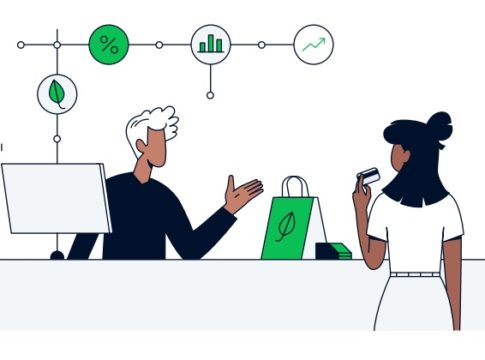Research released by Adyen, the global financial technology platform of choice for leading businesses, revealed that unified commerce — connecting online and offline payments systems into one platform — increases growth projections for American retailers by nearly 10%. Conducted in partnership with Opinium LLP, Censuswide, and the Centre for Economic Business Research (Cebr), the report found that despite already experiencing higher growth rates than the global average, 76% of U.S. businesses expect to grow by 20% or more in 2022 — a $4.5 trillion opportunity – but that this increases to 89% for businesses embracing unified commerce.
According to the results, the businesses that consistently perform the best are those that combine their physical and digital worlds to create a fluid, channel-agnostic experience which prioritizes the customer. In fact, nearly half (47%) of businesses surveyed said that unified commerce improves customer experience while 46% said it helps increase sales and 44% said it increases customer loyalty.
This is particularly impactful in the wake of digital transformation as consumer expectations continue to rise. The research showed that consumers increasingly prefer to shop with businesses who offer flexibility and options, both online and in-store, something that merchants can amplify through unified commerce:
- Half of shoppers globally reported using shopping apps more frequently during the pandemic than previously – a 43% increase over results from Adyen’s 2020 Retail Report.
- Nearly two thirds (61%) of consumers believe that retailers should deliver the same cross-channel flexibility they provided during the pandemic.
- Two thirds (66%) of Americans will not shop with organizations that have a bad shopping experience, either online or in-store.
Despite progress being made to improve the consumer shopping experience, there is still an expectation gap between what consumers want and what brands are able to deliver, meaning merchants are leaving money and loyalty on the table. For example:
- More than two thirds (68%) of consumers would be more loyal to a retailer that lets them buy online and return in-store, yet only 24% of businesses offer this.
- In the past year, 41% of Americans used BNPL services (a 70% increase over the global average) and nearly half (43%) said that BNPL options allowed them to purchase when they wouldn’t normally be able to. However, fewer than 1 in 5 retailers (19%) allow customers to use BNPL services.
- 70% of consumers would be more loyal to a retailer if they were able purchase an item that was out-of-stock in-store and have it shipped directly to their home (up from 60% in 2020), yet only 28% of businesses enable customers to shop and buy across channels.
The insights unlocked via payments data, and particularly unified payments, allow merchants to respond more immediately to these preferences, and while a growing number of businesses are leveraging this opportunity, many are still missing out. Currently only 28% of merchants globally use payments data to understand user behavior and improve customer experience. But the businesses who leverage real time data insights instead of relying on historic data will be best placed to deliver these more personalized, sophisticated experiences.
“Technology is so embedded in the retail experience that it’s the expectation for most consumers. Regardless of whether they are shopping online, in-store, or anywhere in-between, shoppers expect an enhanced experience that allows them to switch seamlessly across channels,” said Roelant Prins, Chief Commercial Officer at Adyen. “This is just the starting point. Technology needs to permeate across the entire business to break down silos to improve both operations and customer experience. When businesses are unified, they can use data from across their operations to improve the customer experience and feed insights from across the customer journey to help improve how they run their business. And this is the key to competitive advantage in modern retail.”
Adyen commissioned Opinium to conduct consumer research of more than 40,000 adults in 26 countries, 10,000 merchants from 23 countries and economic modelling by the Centre for Economic Business Research.





